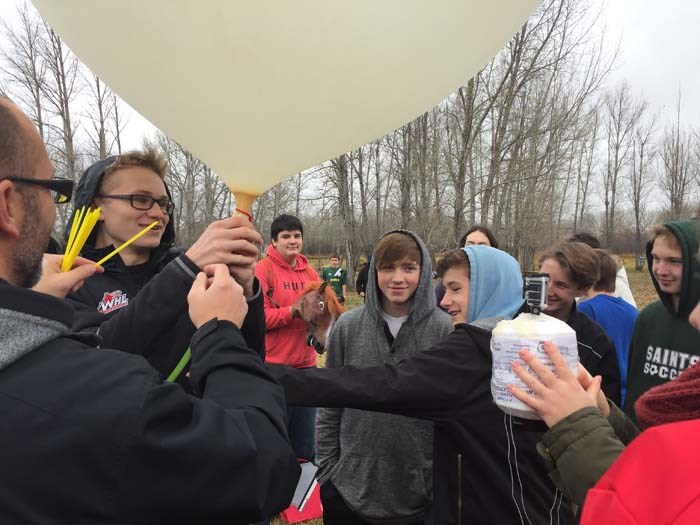A local science experiment has ended in disappointment for some local high school students.
The Science 10 class at Sacred Heart High School recently had an opportunity to participate in a program that sends helium-filled weather balloons into the stratosphere to collect data on atmospheric conditions.
The students launched their balloon on October 31.
After about two hours the balloons are designed to burst and the payload, which includes a camera and other instruments, parachutes back to the ground. Students track the package by GPS, recover it, analyze the data and report back to researchers at the University of Regina.
Unfortunately for the SHHS kids, their GPS failed and they were unable to find where the package landed. They are hoping someone will come across it and return it to the school, said Susan Barton, one of the teacher leaders of the project. The payload is marked with the return address of the school, she noted.
The University of Regina initiated the National High Altitude Balloon Experiment (HABEX) last year by with financial support from the Natural Sciences and Engineering Research Council of Canada’s (NSERC) Promo Science program.
It is a great way to make science, which can sometimes be somewhat dry in a classroom setting, accessible to youth. It is also a cheap and easy way for scientists to conduct collaborative research. The balloon kits come with simple instructions that make it possible for virtually anybody to conduct the experiment.
And, it is being done all over the world combining education with data collection and research.
“There are two main goals to the project,” said Dr. David Gerhard, associate professor in the U of R Department of Computer Science and one of the founders of the project. “Collecting data about the atmosphere is important to study weather patterns and track how the atmosphere is changing. But to me the more important thing is enabling ordinary citizens to participate in this collection of data. This has two effects: More data, but also more people who are engaged and excited about science.”



